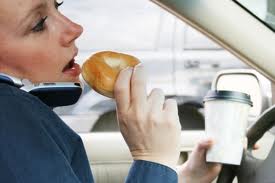Distracted driving accidents – They can happen to you
by Steven M. Gursten

Q. What Is Distracted Driving?
A. Distracted driving is defined as any non-driving activity a person engages in that has the potential to distract him or her from the primary task of driving and increase the risk of a car accident or truck accident.
Q. Are there different types of distracted driving?
A. Yes, there are three main types of distracted driving.
o Visual — taking your eyes off the road.
o Manual — taking your hands off the wheel.
o Cognitive — taking your mind off what you’re doing.
Q. What is the worst type of distracted driving?
A. All distractions can endanger a driver’s safety, but texting while driving is the most alarming because it involves all three types of distraction. You take your eyes off the road to look down at your phone, you take your hands off the wheel to type the text and you take your mind off of driving to think about your message and the actions it takes to complete it.
Q. What are some common distracted driving activities?
A. Other distracting activities include:
o Using a cell phone,
o Eating and drinking
o Talking to passengers,
o Grooming and applying makeup,
o Reading (including maps),
o Using a PDA or navigation system,
o Watching a video,
o Using the Internet
o Changing the radio station, CD, or Mp3 player.
Q. How many car accidents are caused by distracted driving?
A. 20 percent of injury crashes involved reports of distracted driving.
Q. How many people are injured and killed from distracted driving?
A. The numbers of people hurt and killed from distracted driving are staggering.
o Of those killed in distracted-driving-related crashes, 995 involved reports of a cell phone as a distraction. That’s an 18 percent fatality rate for distraction-related crashes.
o 5,474 people were killed in U.S. roadways. (FARS)
o Also, an estimated additional 448,000 were injured in auto accidents that were reported to have involved distracted driving. (GES)
Q. What age group is the most likely to drive while distracted?
A. The age group with the greatest proportion of distracted drivers was the under-20 age group . In other words, 16 percent of all drivers younger than 20 involved in fatal crashes were reported to have been distracted while driving. (NHTSA)
Q. How much does distracted driving increase my chances of being in a car accident?
A.There are many facts that spell out how you’re more likely to crash when you are driving distracted.
o Drivers who use hand-held devices are four times as likely to get into crashes serious enough to injure themselves. o Drivers who text and drive are 23 times more likely to be in a car accident. (Virginia Tech Transportation Institute)
o Using a cell phone use while driving — whether it’s hand-held or hands-free — delays a driver’s reactions as much as having a blood alcohol concentration at the legal limit of .08 percent. (University of Utah)
Q. What can I do to help stop distracted driving?
A. There are several things to you can to do help stop this dangerous behavior and ensure safer driving conditions.
o Make a pledge to not drive distracted: This can be done with your family, friends and your children.
o Lead by example: If you are a parent, lead by example and do not get distracted when you’re behind the wheel. Parents can also enforce household rules that prohibit their teens from texting while driving, among other distracted driving behaviors.
o Prepare for your ride: If you’re prepared, a lot of the distracted driving activities can be eliminated. Eat before you get in the car, plug your iPod in (on shuffle mode) before you start the car, know your directions before you leave the house, etc.
o Pull over to send that text: If you must send a text, make sure you pull over into a safe, well-lit area away from traffic before you do so.
